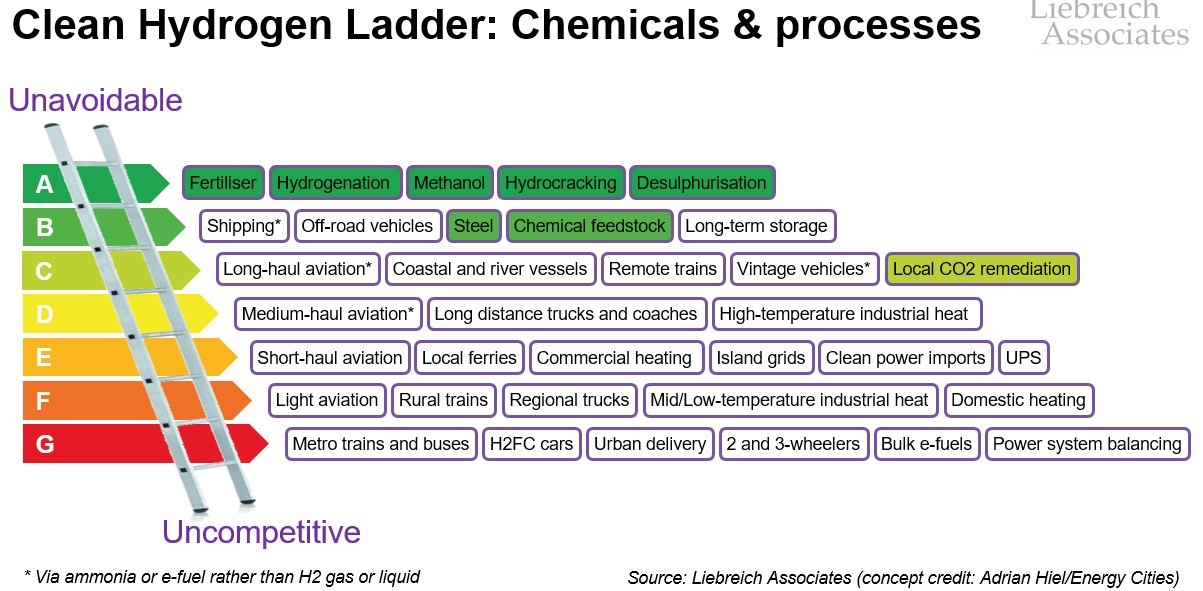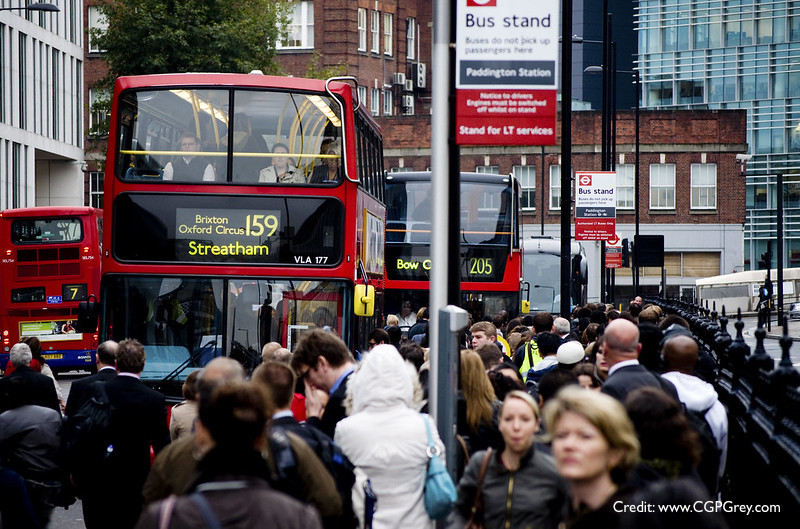Conservative Home: How the Conservatives can win the London Mayoralty in 2024 (Pt 1)
Michael Liebreich is an entrepreneur, expert on clean energy and transport, member of the Board of Trade, and former member of the board of Transport for London. In a new series, he explains what it would take for a Conservative candidate to win an unexpected victory in the 2024 London Mayoral race.
Sadiq Khan has already announced he is standing for a third term as London Mayor. With Labour ahead in the national polls, he had little choice but to hunker down and await a future chance at the top job. But he is vulnerable because his record as Mayor is execrable, and Londoners know it.
Rehearsing Khan’s failures will not be enough to deliver a Conservative victory in 2024. I have been funding some research into London’s demographic trends and voting patterns, to identify how Khan might be beaten. We’ve dubbed it Project 1.4, after the 1.4 million votes that any candidate needs to target in London in order to secure victory with a solid margin.
The Desolation of Smug
Let’s start with Khan’s record. There have, so far, been three Mayors of London, and Khan has been the worst by far – an extraordinary record of failure.
Khan failed so badly on policing and knife crime that he was forced to welcome the Metropolitan Police being put under special measures, despite himself being London’s Police and Crime Commissioner. The London Fire Brigade too has been placed in special measures – and Khan welcomed the move despite bearing overall responsibility for the service.
He has failed so badly on housing that he hasn’t started building almost half the homes for which he received central government funding. He failed so badly on the environment that in two terms he has planted just a fifth of the trees he promised to plant in his first term.
TfL has effectively been taken into special measures as well, despite the fact that the Government made good the fare revenues lost during the pandemic. Even before the pandemic, TfL’s reporting showed ballooning debt and the cancellation or delay of 21 out of 26 major projects.
Crossrail was on budget and on time when Khan took office, but on his watch it ran four years late and £4 billion over budget. As for his claims that he pushed through £1 billion of savings at TfL to compensate for £800 million cut from the government’s operating grant – entirely bogus: the money was more than made up by pre-agreed increases in Business Rates Retention.
Khan’s most shocking failure was his disappearing act during the pandemic. Where was he when London’s restaurants and bars were fighting for survival? When Londoners were cooped up at home, struggling to stay fit and sane? When London’s kids were desperate to continue their education? When 75 bus workers died, twice as many as expected based on age, ethnicity and home postcode?
Despite this litany of Khan failures, a Conservative victory in 2024 does not, on the surface, look likely. Setting aside the dramas that have rocked the Conservative Party over the past few years, the accepted wisdom in political circles is that London has been trending left for decades and is now irrevocably Labour. Boris Johnson’s victories in 2008 and 2012, according to this narrative, were anomalies. This is, however, a dangerous over-simplification.
Running the numbers
I have been working with former Johnson adviser, Alex Crowley, author of Victory in London (the definitive account of Johnson’s two victories), to dissect the demographic and turnout trends in recent London elections. We are still diving into the data – there is fresh census data, for instance – but some conclusions can already be drawn.
First, commentary about any election is heavily influenced by polls, but polls in London are frequently badly wrong. In the last Mayoral electoral cycle, the major pollsters had Khan winning on first preferences by between ten per cent and 20 per cent. In the end, he won by just five per cent. This was widely read as Shaun Bailey having outperformed expectations late in the campaign but is at least as likely to be down to poor polling.
Why was this? Voters significantly overestimate their likelihood of voting in Mayoral elections. In reality, fewer than half of eligible voters turn out, and the ones that do are more likely to be older, to own their homes, and to vote Conservative. Over-estimate turnout, and you over-estimate Labour support. The problem is that the gulf between polls and reality can have a self-fulfilling effect, as Conservative donors and volunteers drift away, and the Conservative platform appears less attractive to voters than it in fact is.
Second, there is surprisingly little movement in votes between elections. At the last mayoral election, just 89 of 633 wards changed hands. Even though this election is not first past the post, this tells you something about the battleground. It is smaller than you think, and despite a highly mobile population, mayoral electoral preferences are remarkably stable.
Our analysis shows that in 2021, boroughs with populations that were whiter, older, and with higher levels of home ownership were more likely to vote for the Conservative mayoral candidate, which reflects the same coalition that delivered two London Mayoral election victories to Johnston. By contrast, boroughs with populations that were younger and more ethnically diverse were more likely to vote Labour, just as they have been since Ken Livingstone’s time in office.
Our third finding is that some things have, nevertheless, changed:
- Khan was able to increase the turnout of key parts of the Labour coalition. Younger, more ethnically diverse areas are now even more likely to vote Labour.
- Khan made inroads into the traditional Conservative base, particularly in 2021: boroughs with a whiter, older population moved from being much less likely to vote Labour to being neutral. This is important. These voters are the ones most likely to turn out in mayoral elections, so the effect is amplified.
- Crucially, areas with the highest education levels moved from being less likely to vote Labour in 2012 to more likely in 2021. As at the national level, education is one of the most significant demographic fault-lines in London politics.
The bottom line is that no Conservative candidate can win in London by appealing only to traditional core Conservative voters. They have to pull off a delicate balancing act: to re-connect and re-energise the traditional base, but also to pass the ‘smell test’ amongst the media elite who influence highly educated voters.
When first announced as the Conservative candidate in 2015, Zac Goldsmith had the seal of approval of the elites. However, he lost them as his Brexit stance and gaffes by his team left the door open for Khan’s campaign to portray him as racist. He always found it hard to connect with outer London. In 2021, Shaun Bailey connected with outer London, but the elites never warmed to him. Neither Goldsmith nor Bailey had Johnson’s ability to appeal to both traditionalists and elites.
So the next Mayoral election is likely to be much closer than many expect. However, in order to appeal to 1.4 million Londoners – the number any candidate needs to target for a comfortable victory and a strong governing mandate – the Conservatives need a candidate who is at ease in the offices of the Guardian as well as in Romford town centre.
A well-run city with a glorious future
To pull this off, the candidate will need to make a dual promise: to address the sense of chaos and drift that hangs over London, while at the same time delivering the policy innovation needed to prepare the city for the future. Think “Make London Great Again” meets “Yes We Can”.
As recently as 2016, London was the economic capital of Europe, the largest financial centre in the world, a magnet for inward investment and talent, home to the largest urban development projects in Europe, and a leader in a range of economic sectors like media, design, technology, telecoms, education, non-profits, retail, hospitality and tourism.
Since then, the national backdrop has been nothing short of grim – the long-drawn-out Brexit saga, the toxicity of Corbynism, five prime ministers in seven years, the ugly revelations spurred by Me Too and Black Lives Matter, Covid-19, the cost-of-living crisis. On this toxic canvas, London has painted its particular catastrophes: knife crime, the Grenfell Tower tragedy, terrorist attacks, the Croydon tram crash, the Sarah Everard killing, delays to Crossrail, the near-bankruptcy of TfL, transport gridlock, the ULEZ wars, toxic revelations about our police and fire services. The sense today is of a once-great city, battered by events, no longer master of its own destiny.
As if this were not enough, Khan has allowed an innovation backlog to build up in all areas of civic policy. London’s demographics have changed, its lifestyles have changed, technology has raced ahead – but there has been no coherent response from city hall. No vision for the future of our streets. No integrated infrastructure or spatial plans. No roadmap for the use of IT and AI to improve services. No ideas to help Londoners enjoy a gig economy without exploitation. No pipeline of opportunities for young and vulnerable citizens. A climate plan designed for Davos, not Dagenham. Instead, we have a Night Czar, doing who-knows-what, on a £120,000 salary.
The Conservative 2024 Mayoral platform must promise the core Conservative voter a return to competent government, and promise the progressive voter strategic, future-looking policy innovation: “a well-run city with a glorious future”.
What might all this mean in terms of policy proposals? That is what we’ll look at in the following articles, starting with the economy, environment, and climate change in Part II.
Terms of use: photos and other media may be used exclusively for the purpose of publicising an upcoming or past event involving Michael Liebreich, or to illustrate an article written by him. Their use must be accompanied by a clear indication of copyright in the following form:
© Liebreich Associates/name of photographer. Photos or other media downloaded in this way remain the property of Liebreich Associates Ltd. Any infringement of these terms of use may result in legal action by Liebreich Associates Ltd or by the respective photographer or rights holder.





